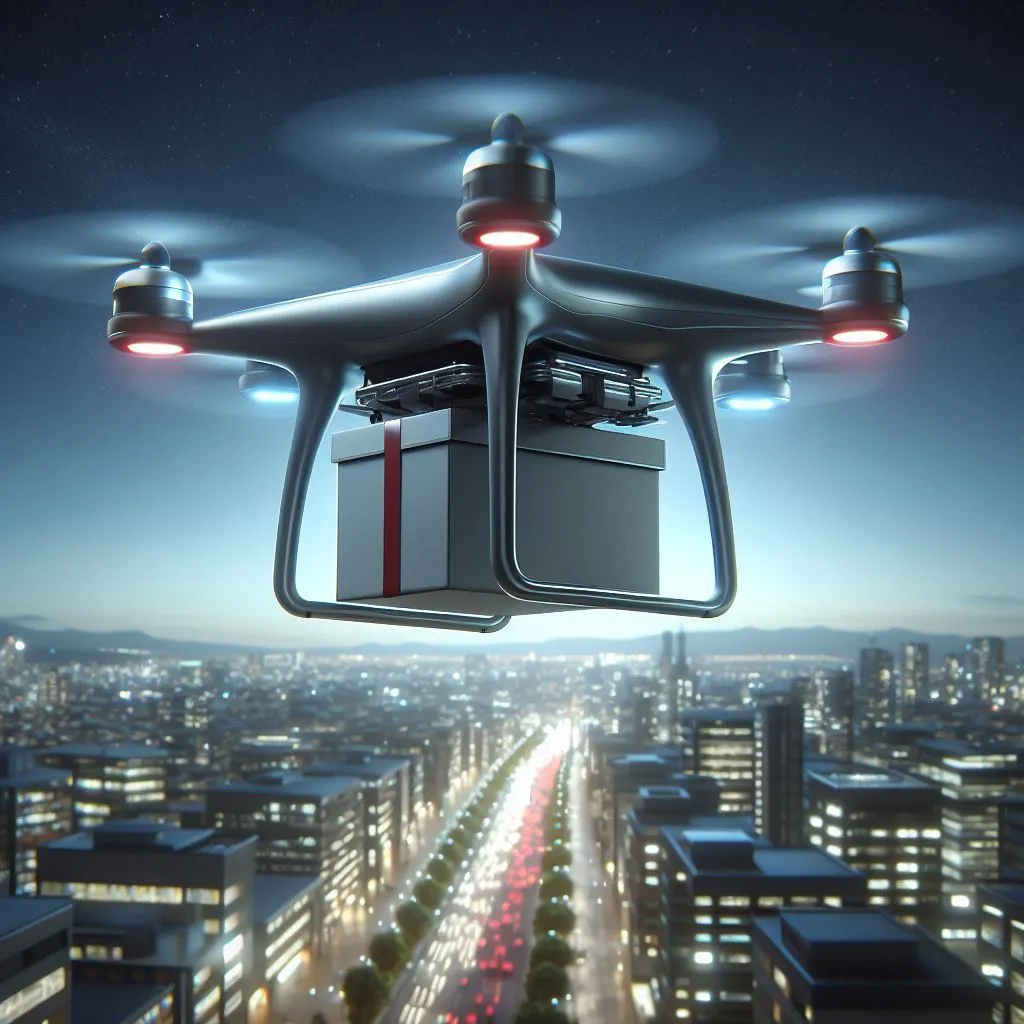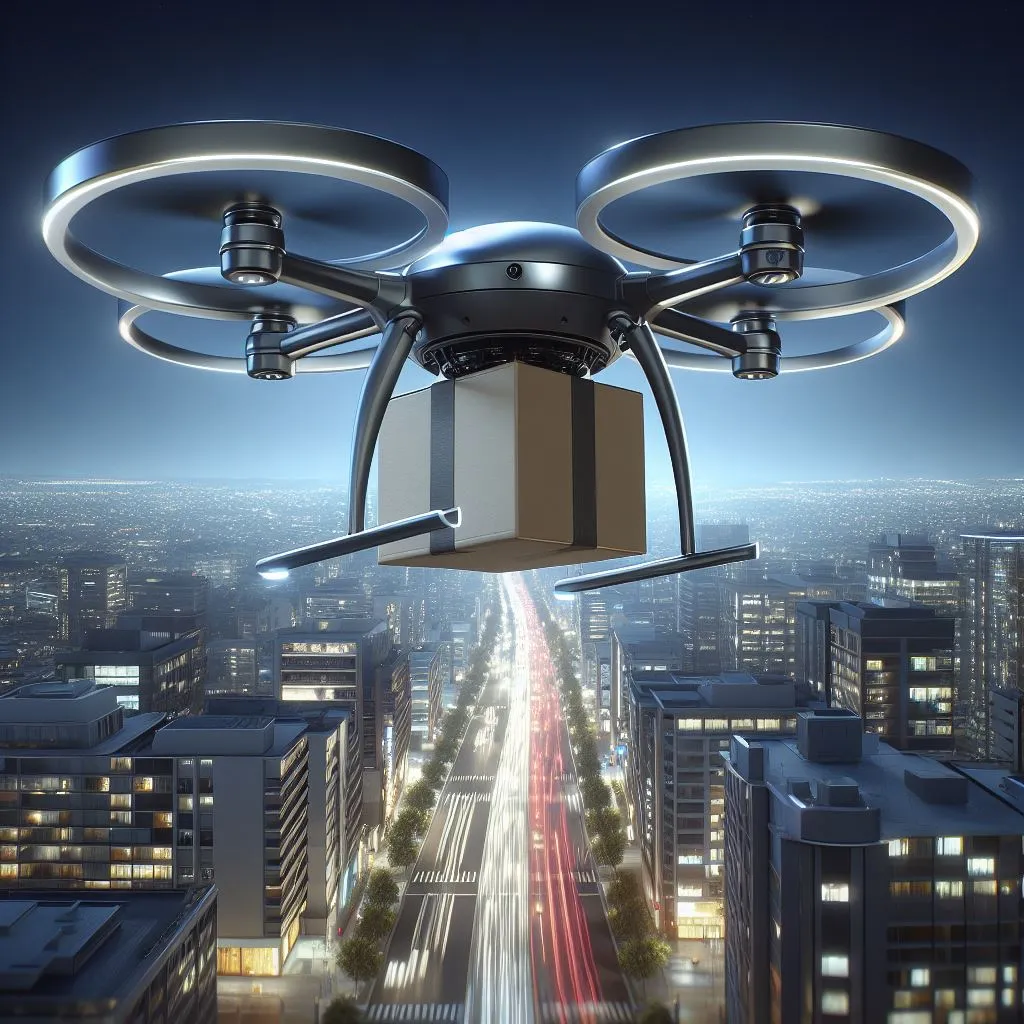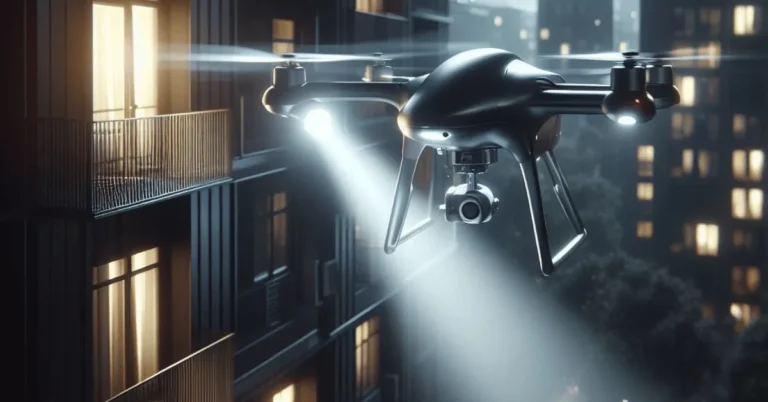Why Delivery Drones Are Bad? (Issues With Delivery Drones)

Picture this: you’re sitting in your backyard, enjoying a sunny afternoon, when suddenly a loud buzzing noise fills the air. You look up and see a delivery drone hovering above you, ready to drop off a package.
At first, it might seem like a futuristic and convenient way to receive goods, but let’s take a closer look at why delivery drones might not be as great as they seem.
Why delivery drones are bad?
Drone delivery has the potential to revolutionize the way we receive goods, offering speed and convenience. However, like any innovation, it comes with its own set of concerns that need to be considered.
Safety Issues:
One major concern is safety. Drones can malfunction, be susceptible to hacking, or face challenges like bad weather, leading to accidents with people, property, or other aircraft.
Privacy is also a worry, as drones equipped with cameras may raise surveillance and privacy invasion concerns.
Additionally, the constant buzzing of drones overhead can contribute to noise pollution, especially in urban areas.
Regulation and Logistics:
The integration of drones into existing air traffic requires robust regulations and technology for airspace management.
Current drone technology has limitations, including restricted delivery distances and payload weight, hindering widespread adoption.
Moreover, drones are weather-dependent, with wind, rain, and other conditions impacting their reliability.

Economic and Social Impact:
The adoption of drone technology could lead to job losses in traditional delivery and logistics sectors, raising concerns about job displacement.
There’s also the potential for urban inequality, with drone delivery initially being available only in certain areas, potentially exacerbating existing disparities.
Increased drone traffic could contribute to environmental issues such as noise and air pollution, depending on the technology used.
It’s important to acknowledge that drone technology is rapidly evolving, and efforts are being made to address these concerns.
Nevertheless, open and informed discussions about the potential downsides are crucial for responsible implementation.
While weighing the benefits against the drawbacks, ensuring proper regulations and safeguards are in place is key to making informed decisions about the widespread adoption of drone delivery.
Ultimately, whether delivery drones are perceived as “bad” depends on individual priorities and how they are utilized.
Making informed decisions about this emerging technology requires careful consideration of the potential impacts and responsible implementation.

Read More: Reasons Why Drones Are Good?
Why did drone delivery fail?
While drone delivery hasn’t completely “failed,” it hasn’t lived up to the initial hype and predictions of widespread adoption. Here are some key factors contributing to its slower progress:
Technical hurdles:
Regulatory hurdles:
Economic and logistical challenges:
Additional factors:
It’s important to note that drone technology is rapidly evolving, and these challenges are being actively addressed.
Some companies have achieved limited success with drone delivery in specific contexts, like medical supplies in remote areas.
However, widespread adoption and mainstream use of drone delivery for everyday goods remain a work in progress.
The future of drone delivery will depend on overcoming these challenges, addressing public concerns, and demonstrating clear benefits over existing delivery methods.
It’s a complex issue with no easy answers, but continued innovation and responsible development holds promise for the future of this technology.

Read More: How to Start a Drone Delivery Business? (2023)
What are the potential risks of drone delivery?
Drone delivery, with its promise of swift and convenient service, comes with substantial risks across several fronts:
Safety Risks:
Collisions and crashes: Drones are susceptible to malfunctions, weather conditions, hacking, and human error, heightening the risk of accidents with people, property, or other aircraft. This raises concerns about injuries, damage, and even fatalities.
Privacy violations: Drones equipped with cameras can capture images and videos, potentially infringing on individuals’ privacy and security. There are worries about misuse of this data for surveillance or commercial purposes.
Noise pollution: A continuous stream of delivery drones could significantly raise noise levels, especially in urban areas, causing annoyance and potential health issues.
Technical Risks:
Limited range and payload: Current drone technology restricts delivery distances and package weight, limiting its suitability for long-distance deliveries or bulky items.
Weather dependence: Wind, rain, and other weather conditions can ground drones, disrupting delivery schedules and causing delays or cancellations, making drone delivery less reliable than traditional methods.
Battery limitations: Drone batteries have limited lifespans, requiring frequent recharging or battery swaps, impacting efficiency and cost.
Cybersecurity vulnerabilities: Drones, being connected devices, are susceptible to hacking and cyberattacks, which could compromise their navigation, security, and even cause crashes.

Regulatory and Legal Risks:
Complex airspace integration: Safely integrating drones into existing air traffic requires robust regulations and technology, which are still evolving and can be slow to implement.
Privacy regulations: Stringent regulations around data collection and use from drones are necessary to address privacy concerns and prevent misuse.
Liability and insurance: Clear legal frameworks are needed to determine liability in case of drone accidents, crashes, or privacy violations, involving multiple parties like drone manufacturers, operators, and delivery companies.
Economic and Social Risks:
Job displacement: Automation through drones could lead to job losses in traditional delivery and logistics sectors, raising concerns about unemployment and economic disruption.
Urban inequality: Widespread drone delivery might initially be available only in certain areas, potentially exacerbating existing disparities in access and services.
Ethical considerations: The use of drone delivery raises ethical questions about data privacy, surveillance, and potential misuse of the technology.
It’s important to note that these risks are actively being addressed through technological advancements, regulatory frameworks, and public discussions.
As drone technology evolves, mitigating these risks will be crucial for ensuring safe, responsible, and ethical implementation of drone delivery for the benefit of society.
Read More: Can Drones Carry Things?
What are the negatives of Amazon drone delivery?
Amazon has been a trailblazer in drone delivery, but there are drawbacks to their approach that raise important considerations. Let’s break down some key points:
Safety and Privacy Concerns:
One major worry is the risk of accidents. Drones can crash due to malfunctions, bad weather, or human error, especially in densely populated areas.
Privacy is also a concern. Drones with cameras can collect sensitive data, raising worries about surveillance and potential misuse of information.
Noise pollution is another issue. A large fleet of delivery drones can increase noise levels in urban areas, affecting quality of life and potentially causing health problems.
Limited Functionality:
Current drone technology has limitations. They can’t cover long distances or carry heavy packages, restricting their applications and practicality.
Weather conditions, like wind and rain, can disrupt drone deliveries, making them less reliable than traditional methods.
Setting up and maintaining charging stations, control systems, and drone fleets requires a significant investment, making widespread adoption expensive.

Ethical and Societal Issues:
Job displacement is a concern. Automation in drone delivery could lead to job losses in traditional delivery sectors.
Initial deployment may favor certain areas, potentially worsening existing disparities in access to services and delivery options.
Questions arise about how Amazon collects, stores, and uses data from drone deliveries, and whether individuals have control over their information.
Regulatory and Legal Challenges:
Integrating drones into existing air traffic requires robust regulations and technology, which are still evolving.
Determining liability in case of accidents or privacy violations requires clear legal frameworks, still under development.
Public concerns about safety, privacy, and noise can hinder widespread adoption, emphasizing the need for effective communication and trust-building efforts.
It’s crucial to understand that these concerns are specific to Amazon’s approach, not drone delivery itself.
Alternative models with different technologies, regulations, and ethical considerations can address some issues.
However, overcoming challenges and ensuring responsible implementation is essential for any drone delivery system to gain positive societal impact and widespread acceptance.
Read More: What Are The Future Uses Of Drones?
Final Thoughts – Why Delivery Drones Are Bad?
Drone delivery once envisioned as a revolutionizing force, has encountered significant challenges on its path to widespread adoption.
While the technology holds immense promise for speed, convenience, and efficiency, its potential negatives in terms of safety, privacy, and societal impact cannot be ignored.
Navigating this complex landscape requires a balanced approach. Embracing technological advancements while addressing concerns and ensuring responsible implementation is key. Here are some crucial steps forward:

Ultimately, the future of drone delivery hinges on our ability to strike a balance between innovation and responsibility.
By prioritizing safety, privacy, societal well-being, and ethical considerations, we can pave the way for a future where drone delivery benefits all, not just a select few.
This conversation has highlighted the complex dynamics surrounding drone delivery, and it’s crucial to continue exploring and discussing these issues as the technology evolves.
Let’s ensure that drone delivery if it becomes a reality, serves as a force for progress and not a source of harm.
FAQs
This question delves into the environmental impact of drone production, energy consumption, and potential noise pollution. It requires examining alternative energy sources, noise reduction technologies, and life cycle assessments of drone use.
Exploring the potential for integrating drones into medical emergencies, search and rescue operations, and disaster relief can highlight the positive impact of this technology beyond just consumer deliveries.
This addresses concerns about affordability, rural access, and potential discrimination in drone delivery services. Discussing potential solutions like subsidy programs and infrastructure development can be crucial.
This delves deeper into privacy concerns, data transparency, and individual control over information gathered during drone flights. Exploring anonymization techniques and user consent models can offer valuable insights.
Imagining the future potential of drone technology beyond just deliveries can spark innovation. Exploring applications in environmental monitoring, infrastructure inspection, and even artistic performances can be thought-provoking.
Watch this video for more details:
Article Sources:







